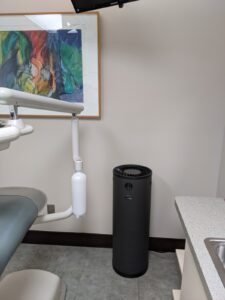 Sleep apnea is often overlooked because it occurs throughout the sleep cycle, meaning patients are typically unconscious when the condition affects them most. Even though you may experience symptoms throughout the day time, these are usually broad signs – like headaches or fatigue – that could also point to a number of other medical conditions. Excessively loud snoring that disrupts your sleep or the sleep of those around you is likely to indicate a sleep disorder that’s hindering your oxygen intake. In addition to snoring, someone else may notice that you’re having a difficult time breathing – or not breathing at all – for periods of time throughout the night. All of these signs likely point to issues you’re most likely unaware of, but there’s good news! Diagnosing sleep apnea is rather simple as there is only one test that can definitively determine the condition – a sleep study.
Sleep apnea is often overlooked because it occurs throughout the sleep cycle, meaning patients are typically unconscious when the condition affects them most. Even though you may experience symptoms throughout the day time, these are usually broad signs – like headaches or fatigue – that could also point to a number of other medical conditions. Excessively loud snoring that disrupts your sleep or the sleep of those around you is likely to indicate a sleep disorder that’s hindering your oxygen intake. In addition to snoring, someone else may notice that you’re having a difficult time breathing – or not breathing at all – for periods of time throughout the night. All of these signs likely point to issues you’re most likely unaware of, but there’s good news! Diagnosing sleep apnea is rather simple as there is only one test that can definitively determine the condition – a sleep study.
Exploring Sleep Studies
If your dentist confirms that you are experiencing symptoms related to a sleep disorder, they’ll likely recommend that you undergo a sleep study, or polysomnography, for a proper diagnosis. Usually, the entire procedure is performed in a “lab” that closely resembles bedroom – instead of a hospital room – and feels comfortable as many people find it easier to fall asleep in such an environment. In certain circumstances, an at-home sleep study may be recommended if your dentist believes that the accuracy of your results may be compromised otherwise from the sudden change in environment.
During a polysomnography, a machine will record different measurements throughout your entire body. Generally speaking, it measures brain wave activity, eye movements, heart rate and rhythm, leg movement, oxygen and carbon dioxide levels in the blood, and respiration to determine how often your breathing cessations are occurring.
The severity of your condition is indicated by a number known as the apnea-hypopnea index which is based off of the results provided by your polysomnography. If you don’t have sleep apnea, this number will be less than 5 – but, mild disorders range from 5-15, moderate from 15-30, and severe conditions have an AHI greater than 30.
If you believe you’re suffering from similar symptoms, don’t hesitate to contact your dentist! Many people think sleep apnea is harmless – this is not true. In fact, it can often cause further health complications such as; heart disease, stroke, diabetes, including several others.






